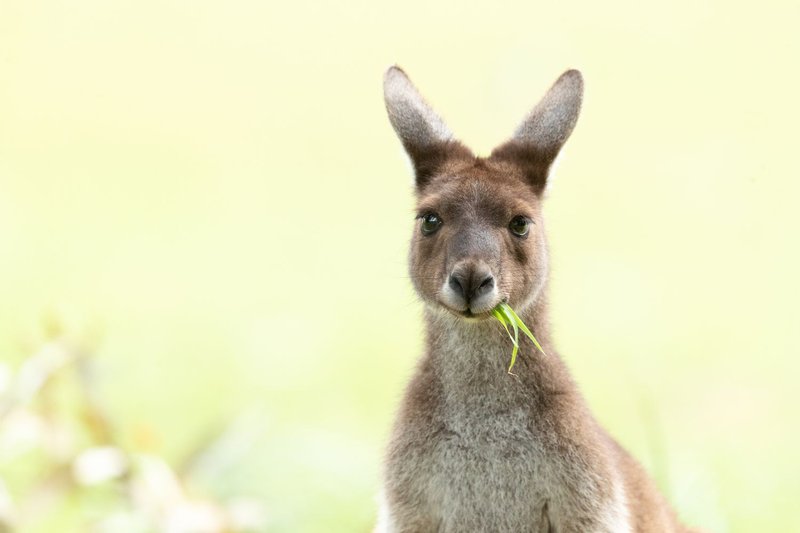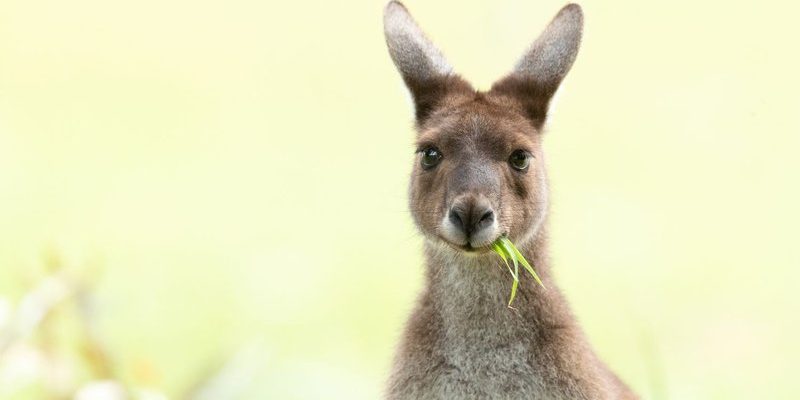
Kangaroos, particularly the Western Grey, have a lot more to them than meets the eye. From their social structures to their unusual modes of movement, these kangaroos offer countless surprises. Whether you’re a budding wildlife enthusiast or just curious about Australia’s natural wonders, you’re in for a treat! Let’s dive deeper into the amazing world of the Western Grey Kangaroo.
1. Unique Physical Traits
The Western Grey Kangaroo isn’t your average kangaroo. They have some distinctive features that set them apart. For starters, they sport a dense grey fur coat that provides protection against the varying Australian climate. Their bodies are large and muscular, allowing them to leap over 3 meters in a single bound. Think of it like a mini Olympic athlete—hopping and bounding over obstacles with ease!
Another standout feature is their long, strong tail. It’s not just for show; this tail acts as a rudder when they’re jumping, helping them maintain balance and steer while they’re in the air. Isn’t it amazing how nature equips animals with just what they need to thrive?
2. Where They Call Home
As their name suggests, Western Grey Kangaroos primarily inhabit the southwestern parts of Australia, particularly in open forests, scrublands, and grasslands. Picture vast stretches of land dotted with eucalyptus trees and grassy patches where these kangaroos can graze. They prefer areas where they can easily find food and water, which is crucial for their survival.
Interestingly, their adaptability allows them to thrive in both rural and urban settings. You might even spot them near towns or cities, enjoying a peaceful afternoon munching on grass. It’s not uncommon for these kangaroos to take advantage of the greenery that humans inadvertently provide!
3. Social Creatures
Here’s the thing: Western Grey Kangaroos are incredibly social animals. They often gather in groups, known as mobs, which can consist of just a few individuals or up to 100 kangaroos! This social structure helps them keep an eye out for predators and share important resources.
Among the mob, there’s a unique hierarchy. Typically, a dominant male will lead the group, ensuring safety and access to food. Interestingly, you might find kangaroos grooming each other—a behavior that strengthens bonds and fosters a sense of community. It’s lovely to think about how these creatures support one another, much like friends do!
4. Feeding Habits and Diet
When it comes to food, Western Grey Kangaroos are primarily herbivores. Their diet mainly consists of grasses, leaves, and shrubs. You might be wondering how they cope in the wild during dry spells. Well, these kangaroos are equipped with a special digestive system that allows them to get the most nutrients from their plant-based diet, even if the food is tough or fibrous.
Their grazing habits not only keep them healthy but can also positively impact their environment. As they munch on grass, they help control plant growth, which can prevent bushfires in their habitat. Talk about an animal that gives back to its ecosystem!
5. Reproductive Behaviors
The reproduction of the Western Grey Kangaroo is as fascinating as the animals themselves. Female Western Grey Kangaroos have a unique reproductive system that allows them to be perpetually pregnant. Once a joey is born, she can conceive again almost immediately! This means that while one joey is nestled in her pouch, another could be on its way.
After about 30 to 40 days in the pouch, the joey starts to peek out and eventually begins to take short excursions outside. It’s a gradual process that allows the little one to transition safely into the world. Imagine the excitement of a newly born kangaroo taking its first steps—it’s a cute sight to behold!
6. Movement and Locomotion
One of the most distinctive aspects of kangaroos is their unique way of moving. They are natural hoppers, and their powerful hind legs allow them to travel quickly over long distances. When you see a kangaroo bounding across the land, it’s a sight to behold. They can reach speeds of up to 56 km/h (about 34.8 mph) during a sprint!
What’s even more interesting is how they conserve energy while hopping. Their large tails and strong legs work together to propel them forward, allowing them to cover ground without tiring easily. When you think about how they travel, it’s like they have their own built-in efficiency system—a perfect design for the wide-open spaces of Australia.
7. Adaptations to the Environment
Living in diverse habitats, Western Grey Kangaroos have developed several adaptations that help them survive. For instance, they are excellent at regulating their body temperature. During hot days, you can often find them resting under trees, taking it easy to avoid overheating. This behavior not only keeps them cool but also conserves energy.
In the cooler months, they can utilize their thick fur to keep warm. Isn’t it amazing how these kangaroos adjust to seasonal changes? It just shows how well-suited they are to their environment, making them resilient creatures.
8. Conservation Status
While the Western Grey Kangaroo is currently not endangered, it’s important to remember that they still face threats from habitat destruction and climate change. As humans continue to expand into their territories, these kangaroos can find their living spaces shrinking. Conservation efforts are crucial to ensure these beautiful animals continue to thrive.
Organizations are working hard to protect their habitats and educate the public about the importance of kangaroos in the ecosystem. Every small effort counts, whether it’s supporting wildlife organizations or spreading awareness about these iconic Australian creatures.
9. Fun Facts About Their Behavior
Western Grey Kangaroos have some quirky behaviors that are worth noting. For example, they communicate through a variety of sounds. You might hear them make soft grunts or even loud claps during social interactions. It’s a bit like having a chat with friends, sharing thoughts and feelings in their own kangaroo way!
They also engage in playful behavior, especially the younger ones. Watch them chase each other or practice their hops—a delightful display of energy and joy. It reminds us of how important play is, not just for young animals but for all of us!
10. Cultural Significance
Lastly, the Western Grey Kangaroo holds a special place in Australian culture. They are often featured in Aboriginal art and stories, symbolizing strength and resilience. Additionally, kangaroos are a well-known symbol of Australia worldwide, appearing on everything from logos to souvenirs. When you think of Australia, it’s hard not to picture these charismatic creatures!
By learning about the Western Grey Kangaroo, we gain insight into the rich tapestry of Australia’s natural history. They remind us of the beauty of wildlife and the need to protect our planet’s diverse inhabitants.
As we wrap up this exploration, I hope you feel a little closer to understanding the Western Grey Kangaroo. Whether you’re an animal lover or just someone who enjoys learning new things, these kangaroos are truly fascinating creatures, deserving of our admiration and protection. Let’s appreciate them just as much as they enrich the Australian landscape!

